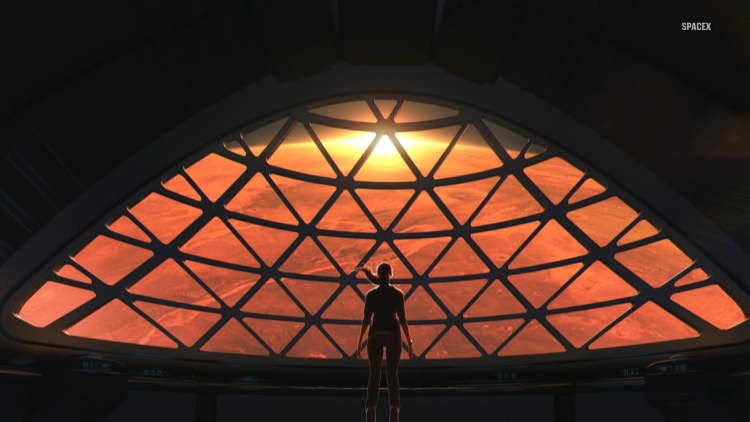Google is famous for its "20 percent time," whereby staffers are allowed to spend the equivalent of one workday a week on passion projects that they believe will benefit the company. The idea is that creativity and innovation happen when people are allowed to experiment. Things such as Gmail and Chromebooks have resulted, according to a Google spokesperson.
Whether the policy still exists has been debated over the last few years.
But on Thursday, Google announced that artificial intelligence researcher and senior software engineer Chris Shallue discovered two new planets — and it was born of a flex-time side venture. One day, it could even help discover alien life.
"I'm a Google AI researcher with an interest in space, and started this work as a 20 percent project," writes Shallue in a statement from Google. He read about the existence of vast quantities of planetary data NASA had collected via its Kepler spacecraft and telescope, which has taken a photo from its orbit every 30 minutes for the last four years, according to Google.
Shallue recognized the un-mined information as ripe for an AI experiment.
"Machine learning really shines in situations where there is so much data that humans can't search it for themselves," says Shallue in a NASA statement. (The Kepler dataset took two weeks to download and didn't fit on a desktop, according to a Reddit "ask me anything" with Shallue.)
Shallue recruited Andrew Vanderberg, an astrophysicist and doctoral fellow at the University of Texas at Austin, for help on the project, which took about nine months.
Together the pair used 15,000 NASA data points to create a neural network, or artificial intelligence organized in a similar way to neurons in the brain. It learned to recognize small light patterns indicating the existence of a planet that previous automated and manual tests had missed.
To verify that the neural AI was accurate, Vanderberg used it on a set of photos of 670 stars, then compared that to manually sorted results. What took Vanderberg eight hours to complete took the neural network only a few minutes, the astronomer tells CNBC Make It.
Shallue and Vanderberg had taught the system "how to identify planets around faraway stars," says Shallue in the Google statement.
The two planets Shallue and Vanderberg discovered are "exoplanets," or planets rotating around sun-like stars other than the one Earth revolves around. Kepler-90i was found to be the eighth planet circling the Kepler-90 star, 2,545 light-years from Earth. The only other solar system known to have eight planets rotating around a sun is our solar system. The other planet identified is Kepler 80g.
"We got lots of false positives of planets, but also potentially more real planets," says Vanderburg, in the NASA statement. "It's like sifting through rocks to find jewels. If you have a finer sieve, then you will catch more rocks but you might catch more jewels, as well."
Beyond discovering new planets, this technological development is a step toward discovering alien life, explains Vanderberg to CNBC Make It.
"The main reason we decided to work on this project was to help us measure how common Earth-sized planets in Earth-like orbits around Sun-like stars are," Vanderberg tells CNBC Make It. He estimates finding alien life could be possible somewhere between 2030 and 2050.
Both Google CEO Sundar Pichai and Alphabet chairman Eric Schmidt celebrated the 20 percent project on Twitter.
Google isn't the only company that cultivates innovation with a 20 percent ethos. 3M had a 15 percent time policy going back to the 1990s, points out Ryan Tate, author of "The 20% Doctrine: How Tinkering, Goofing Off, and Breaking the Rules at Work Drive Success in Business." Famously, 3M employee Art Fry invented the Post-it via the flex time, according to Wired.
And other top tech companies regularly host hackathons, where employees are encouraged to create solutions to problems under time pressure. The first iteration of Facebook's Safety feature came out of a hackathon, for example.
As for Google and Shallue, clearly the sky's not even the limit.



